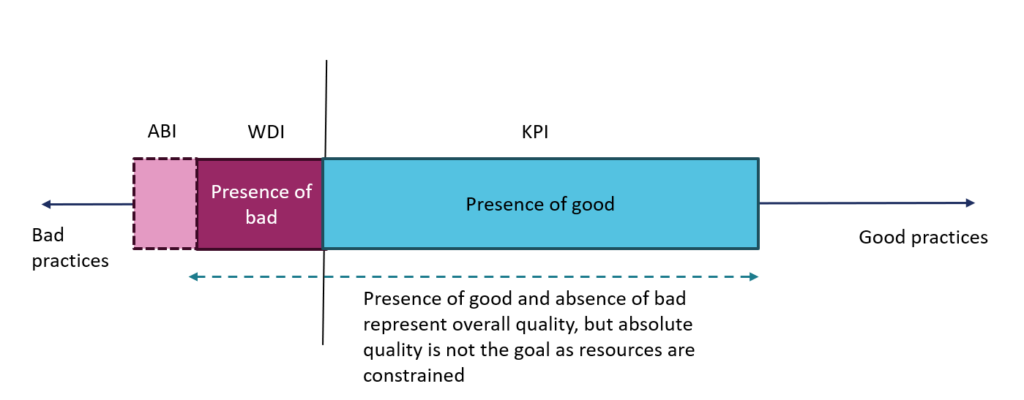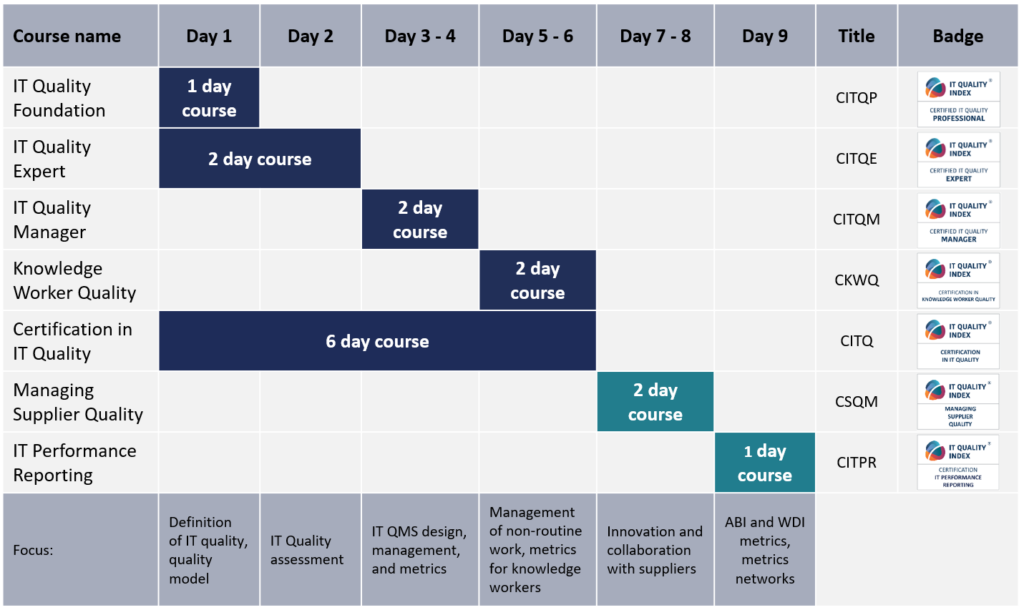IT Performance reporting
The most used IT management methods, such as ITSM, ITIL, COBIT, process methods, offer a whole range of metrics, which are usually focused on reporting activities in the area of:
- processes (changes, incidents, requests,.)
- services (availability, response speed,.)
- user satisfaction (CX, CSAT, NPS..)
These approaches are useful from the point of view of reporting what IT is doing. However, there is a lack of capture of activities that are aimed at prevention, prevention of undesirable situations and adaptation of IT to new trends and procedures, for example in security or innovations. Two categories of metrics can be beneficial for these areas:
ABI – absence of bad indicator – measures the occurrence of singular, unusual and undesirable situations
WDI – wrongdoing indicator – captures mistakes and situations that often arise unconsciously as a result of infrequent circumstances
ABI and WDI metrics make it possible to better communicate systematic and quality work in IT, they are able to quantify the non-occurrence of circumstances as an effect of mainly preventive and adaptive steps.
ABI and WDI metrics are interesting from many points of view:
- They capture situations that tend to have a significant effect on people’s behavior, leading to reconfiguration and behavior change, for example a new or different work procedure
- Make it possible to identify whether there is a healthy degree of risk acceptance, appropriate degree of autonomy and allocation of decision-making powers in IT
- It helps to set the right balance between quality, costs, risks, willingness to innovate and adaptability

Examples of ABI metrics:
– number of unsuccessful recruitments; how many people were hired and then fired
– successful DDOS attacks
– system congestion during the sales campaign, lost transactions
– the proportion of meetings that the participants evaluated as a waste of time
– absence of innovation initiatives in IMS (innovation management system)
– outdated IT systems for which the comparison of costs and operation and usefulness is not evaluated (missing RBA)
The introduction of ABI and WDI metrics, which complement or partially replace KPIs, is part of a broader transformation of IT from reactive management towards adaptability, prevention of undesirable situations, high resilience and the growing influence of the quality know-how of people in IT on the overall functioning of the company.
Other concepts such as ‘metrics networks’, metrics for collaborative quality analysis (CLX) are part of the new one-day IT Performance Reporting course, which expands the range of IT quality management courses.
